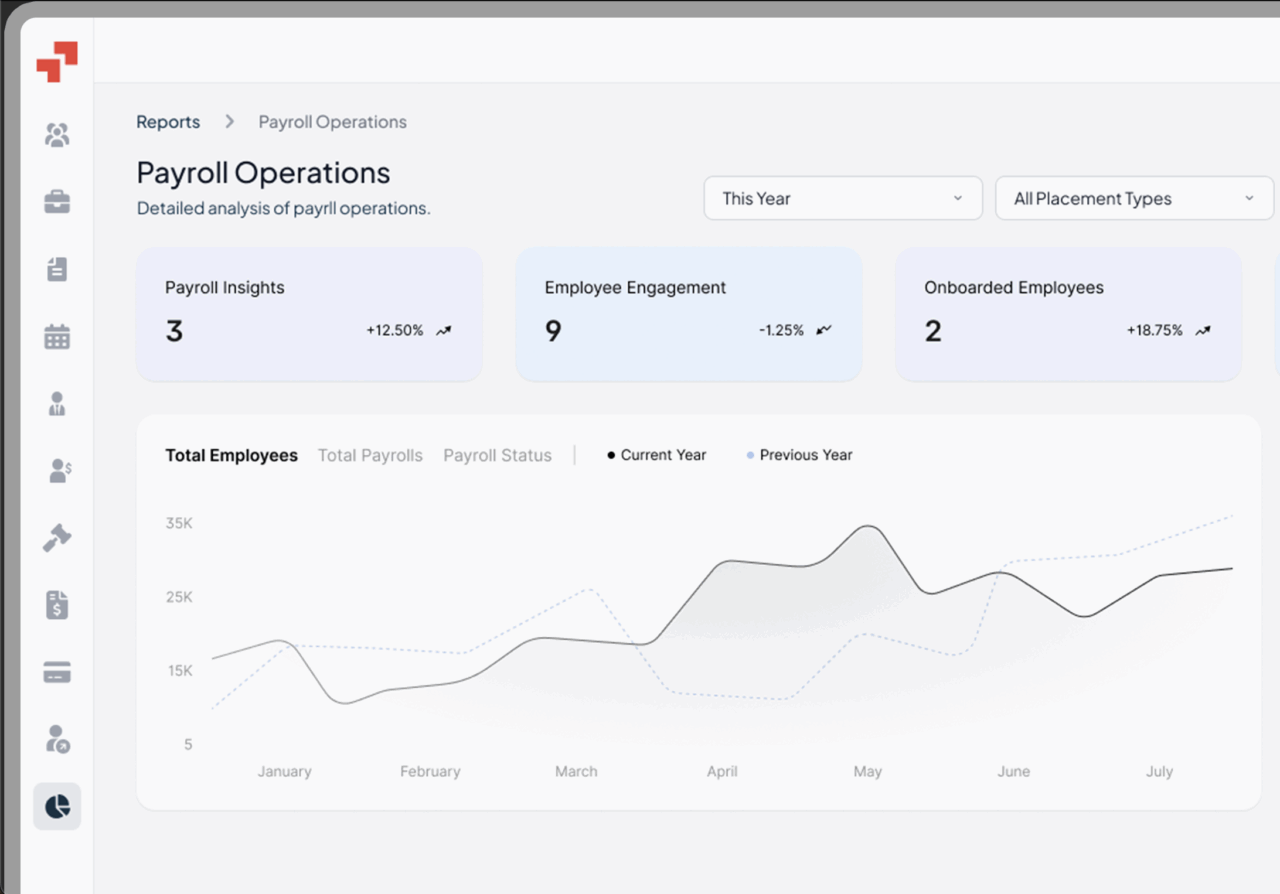Global Workforce GlossaryVirtual Teams
Related Terms
Remote Work
Distributed Workforce
Asynchronous Communication
Global Teams
Remote-First Company
In today’s borderless world, the concept of work has evolved far beyond office walls, incorporating remote employees as a core component . Teams no longer need to share a physical space to innovate, build products, or solve problems together. For modern organizations, virtual teams have become the foundation of global collaboration—helping them scale, stay agile, and access talent anywhere. Yet, managing and structuring these teams effectively requires corporate strategies, technology, and cultural intelligence.
Table of Contents
- What is co-employment?
- What are co-employment laws?
- Why is co-employment a risk?
- What are co-employment rules
- Co-employment do’s and don’ts
- How does co-employment work?
- What is the difference between co-employment and joint employment?
- Co-employment vs PEO
- Co-employment vs employee leasing
- Is co-op considered a full-time employee?
- Is it illegal to work for two jobs in the same industry?
- Co-employment examples
- Practical Case Study Example
- PamGro and Co-employment: Your Global Partner
What are Virtual Teams?
A virtual team is a group of professionals who work together toward common objectives while working remotely and being physically dispersed across cities, countries, or continents. They rely on digital communication and collaboration tools—such as project management software, cloud platforms, and video conferencing—to stay connected.
Virtual teams often consist of members from multiple countries, leading to national diversity within the team, incorporating different cultures . To ensure smooth operations, virtual teams should establish clear communication protocols to ensure all members are on the same page.
Virtual teams may include full-time employees, contractors, or consultants collaborating as a geographically dispersed team remotely. They can be found in every industry—from IT and product development to finance and customer support.
How to Manage Virtual Teams
Effective management of virtual teams starts with clarity, communication, and culture. Leaders must establish clear expectations, define deliverables, and create transparent feedback systems.
Best practices for managing virtual teams:
- Set measurable goals and KPIs from day one.
- Use reliable project management software (e.g., Asana, Trello, or Jira).
- Maintain consistent communication through both synchronous and asynchronous channels.
- Encourage autonomy—trust team members to deliver results.
- Schedule regular one-on-one and team check-ins to maintain connection.
- Providing training sessions on digital tools helps ensure every team member understands how to use them effectively.
- Investing in employee development through online courses or webinars enhances team engagement and skills.
Virtual leadership focuses on outcomes, not oversight. Managers who embrace trust and flexibility typically see higher engagement and retention, essential skills for leading virtual teams . PamGro helps companies structure distributed teams globally—managing local payroll, compliance, and contracts—so leaders can focus on performance, not paperwork.
What are the Characteristics of Virtual Teams?
Virtual teams share several defining traits that make them unique and effective:
- Geographical diversity: Members are spread across regions or countries.
- Digital collaboration: Work depends on online tools for communication and coordination.
- Cultural diversity: Team members bring different languages, customs, and work styles.
- Flexible structure: Work often happens asynchronously to accommodate time zones.
- Technology dependency: Reliable infrastructure is critical to success. Virtual teams can generate more ideas due to the diverse cultural perspectives of their members. Creating a psychologically safe environment encourages team members to engage and share ideas openly. Virtual teams that successfully integrate cultural awareness training are better equipped to handle diverse perspectives.
- Geographical diversity: Members are spread across regions or countries.
- Digital collaboration: Work depends on online tools for communication and coordination.
- Cultural diversity: Team members bring different languages, customs, and work styles.
- Flexible structure: Work often happens asynchronously to accommodate time zones.
- Technology dependency: Reliable infrastructure is critical to success.
These characteristics enable companies to tap into global expertise but also demand sensitivity to cultural differences and communication styles. Virtual leaders must intentionally foster inclusion, empathy, and shared purpose.
Why are Virtual Teams Important?
Virtual teams have become a strategic necessity for companies expanding globally. They provide access to talent worldwide while reducing costs and improving agility.
Key benefits:
- Global reach: Hire the best talent anywhere, without relocation.
- Cost efficiency: Save on office space and operational overheads.
- Continuous operations: Work can move seamlessly across time zones.
- Scalability: Easily add or reconfigure teams based on project needs.
- Work-life balance: The flexibility of virtual teams offers better work-life balance to employees.
For startups and enterprises alike, virtual teams make it possible to compete internationally. By partnering with an EOR like PamGro, companies can build compliant, distributed teams without legal or administrative hurdles.
Virtual Teams Advantages and Disadvantages
Like any organizational model, virtual teams come with strengths and challenges.
Advantages:
- Access to specialized global talent.
- Greater flexibility and employee satisfaction.
- Lower fixed costs for offices and travel.
- Increased productivity through focus and autonomy. Increased productivity can result from allowing employees to work from home without commuting stress. Many remote employees report higher productivity due to fewer in-office distractions and the ability to work during their peak performance hours.
- Access to specialized global talent.
- Greater flexibility and employee satisfaction.
- Lower fixed costs for offices and travel.
- Increased productivity through focus and autonomy. Increased productivity can result from allowing employees to work from home without commuting stress.
Disadvantages:
- Communication barriers and time-zone coordination issues.
- Possible isolation or reduced social connection.
- Technology dependence and cybersecurity risks. Virtual teams face increased cybersecurity risks compared to traditional, centralized offices.
- Cultural misunderstandings if not managed proactively.
- Performance monitoring difficulties arise for managers in virtual teams, as traditional supervision methods are less applicable. Remote work can blur the boundaries between professional and personal life, potentially leading to burnout.
- Communication barriers and time-zone coordination issues.
- Possible isolation or reduced social connection.
- Technology dependence and cybersecurity risks. Virtual teams face increased cybersecurity risks compared to traditional, centralized offices.
- Cultural misunderstandings if not managed proactively.
Overcoming these challenges requires clear leadership, the right tools, and structured onboarding. PamGro helps clients minimize risk by ensuring compliant employment, standardizing contracts, and aligning HR policies for distributed workforces.
What is the Difference Between Remote Team and Virtual Team?
The terms remote team and virtual team are often used interchangeably—but they’re not identical.
- Remote teams: Employees work away from the central office but are typically part of the same organization and country.
- Virtual teams: Comprise members from multiple organizations, functions, or countries collaborating digitally toward a shared goal.
In essence, all virtual teams are remote, but not all remote teams are virtual. A virtual team’s complexity increases when managing across borders, cultures, and legal systems—something PamGro’s EOR model simplifies by handling employment, payroll, and compliance globally.
What are the Three Types of Virtual Teams?
Virtual teams can take different forms based on structure and purpose:
- Networked Teams – Independent professionals or groups working together across organizations or geographies to solve complex problems.
- Parallel Teams – Temporary teams formed from different departments or companies to achieve specific objectives, like policy recommendations or system design. Parallel teams usually consist of specialized professionals and are highly task-oriented.
- Product Development Teams – Long-term, cross-functional teams focused on creating and improving products or services across locations. Project development teams create new products, information systems, or organizational processes for users or customers.
Choosing the right model depends on business goals. PamGro supports all three by helping clients establish compliant work arrangements and seamless HR processes for international collaboration.
How Do Virtual Teams Differ from Face-to-Face Teams?
Communication and interaction are the biggest differences. Face-to-face teams rely on spontaneous conversations, nonverbal cues, and shared environments, while virtual meetings become the norm for virtual team . Virtual teams depend on structured communication through technology.
Key distinctions:
- Virtual teams communicate primarily via digital tools.
- Team culture and trust-building require deliberate effort.
- Feedback loops must be intentional, not incidental.
- Work often happens asynchronously due to time zones.
Leaders must replace “hallway interactions” with planned connection points—virtual team meetings, informal chats, and transparent documentation—to preserve alignment and cohesion.
Are Virtual Teams Effective?
Yes—when designed thoughtfully, virtual teams can be just as effective, if not more, than traditional teams.
Effectiveness depends on several factors:
- Defined objectives: Clear roles and expectations from the start.
- Strong communication rhythm: Regular check-ins and feedback loops.
- Cultural awareness: Sensitivity to global differences in communication.
- Empowered leadership: Managers who promote autonomy and accountability.
Studies show that well-managed virtual teams often outperform co-located teams due to diverse approaches to group decision making and continuous productivity. With PamGro managing compliance and HR logistics, companies can concentrate on optimizing team collaboration and results.
Virtual Teams and the Future
The future of work is hybrid—and virtual teams will drive it. As businesses expand globally and technology advances, virtual collaboration is becoming the new standard.
Emerging trends:
- Hybrid models: Mixing in-person and virtual work for flexibility.
- AI-driven project management: Automating coordination and communication.
- Global talent ecosystems: EOR partners like PamGro making it simple to hire worldwide.
- Focus on well-being: Virtual leaders investing in culture, inclusion, and mental health.
- Setting core overlapping hours for meetings helps resolve issues promptly for teams in different time zones. Regularly scheduled check-ins can help keep virtual team members updated and address concerns in real-time.
- Hybrid models: Mixing in-person and virtual work for flexibility.
- AI-driven project management: Automating coordination and communication.
- Global talent ecosystems: EOR partners like PamGro making it simple to hire worldwide.
- Focus on well-being: Virtual leaders investing in culture, inclusion, and mental health.
Organizations that master virtual team strategies will lead in agility, innovation, and global reach. Those that ignore it risk being left behind.
Examples of Virtual Teams
Example 1 – Global Product Development:
A SaaS company in Singapore forms a virtual team with engineers in India, designers in Poland, and QA testers in Brazil. They collaborate using agile sprints and cloud-based tools. PamGro manages compliance and payroll in each country, allowing the company to scale rapidly without entity setup.
Example 2 – Parallel Advisory Team:
An enterprise builds a short-term virtual team of consultants from five countries to assess market expansion opportunities. The group meets virtually weekly, shares findings via project dashboards, and delivers a strategy report in 10 weeks.
Example 3 – Offshore Service Teams:
A U.S. fintech firm uses an offshore ISD virtual team for data operations and customer support across Asia and Europe. With PamGro’s EOR support, the company ensures compliance, consistent pay, and strong engagement across time zones.
Practical Case Study: Building a Global Virtual Team
A U.S.-based startup wanted to accelerate product delivery by building a global development team across Asia, Africa, and Eastern Europe. Rather than setting up legal entities, they partnered with PamGro to hire developers compliantly in each region. Within months, the company onboarded 12 skilled engineers across five time zones.
By using cloud-based collaboration tools and asynchronous workflows, productivity increased by 28%, and project turnaround time dropped by two months. PamGro handled contracts, payroll, and compliance, while the startup focused entirely on innovation—showing how effective virtual teams can unlock speed and scale globally.
PamGro: Your Trusted Partner for Global Exapansion
Virtual teams redefine what’s possible for global organizations—but success depends on the right foundation, even for projects of very short duration . PamGro helps companies hire and manage international talent effortlessly through Employer of Record (EOR) services, ensuring compliance in over 150 countries, tapping into the local talent pool .
Whether you’re setting up networked teams for innovation, offshore production teams for scalability, or hybrid teams for flexibility—PamGro enables you to expand globally without borders, risks, or complexity.
Expand your business without borders — PamGro makes it simple to hire, manage, and scale global virtual teams compliantly and with confidence.
FAQ: Virtual Teams
Communication and trust. Leaders must establish consistent channels and foster inclusion to overcome distance barriers.
Through shared rituals, transparent goals, recognition, and casual interactions—like virtual coffee breaks or team games.
Yes. They save on facilities and relocation costs while increasing flexibility.
Slack, Zoom, Notion, Jira, and other collaboration platforms enhance efficiency and accountability
By providing Employer of Record solutions that manage employment, payroll, and compliance across countries—so companies can focus on growth, not red tape.
Hire the Best Talent, Anywhere






